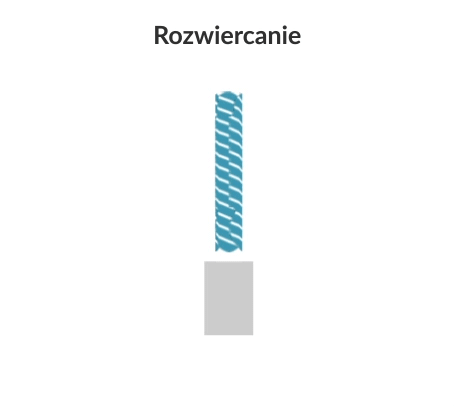Reaming is a machining process that increases the diameter of a previously drilled cylindrical hole to improve dimensional and geometrical accuracy and/or reduce surface roughness. The reaming process is carried out using multi-blade tools called reamers. During reaming, the primary (rotary) motion is performed by the tool. The feed motion is performed in a direction parallel to the axis of the reamer by the tool or workpiece.

Reaming
pl.
Type of technology
Development phase
Level of innovation
Scale of production
batch, unit
Technology readiness level TRL
Description of the technology
Purpose of use
finishing machining of holes
Industry usage
all industries
Alternative technologies
- boring
- hole milling
- broaching
- laser beam machining
- electron beam machining
Visualisation of action
Advantages
- basic technique for subtractive manufacturing of holes
Disadvantages
- use of machining fluids that are not inert to people and the environment
- significant tooling and tooling costs
- relatively outdated technology (hole finishing can be done with other machining techniques)
Workpiece material types
- all material groups
- ferrous metals
- non-ferrous metals
- non-ferrous metals alloys
- hard materials
- hardened materials
Examples of products
- precision bushings
- engine cylinders and blocks
- roller bearings
- pump bodies
- bearing bodies for CNC machines
Implementation of the technology
Required resources
- drilling machine
- milling machine or lathe
- cutting tools
- tooling
- machining fluids (optional)
Required competences
- training in machining
